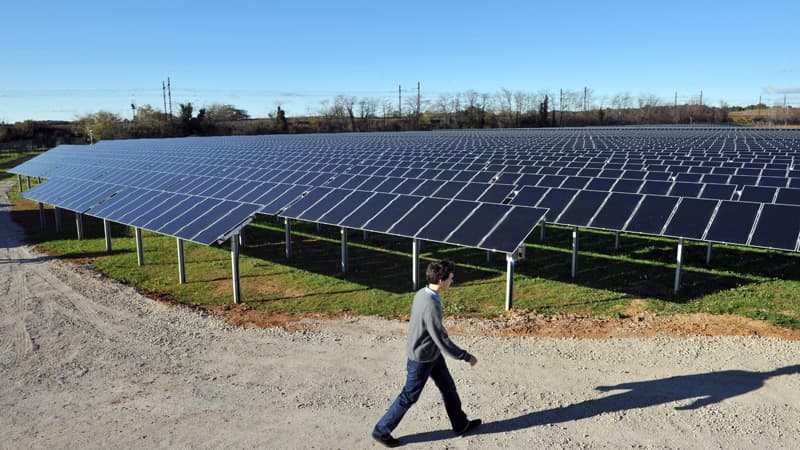Triple electricity production from wind and photovoltaic power by 2035 and multiply it by six by 2050. On Monday, Engie unveiled its optimized scenario for Europe to meet massive electricity needs in the coming decades while achieving its goal of reducing EU emissions by at least 55% by 2030 compared to 1990 and then carbon neutrality by 2050. “This is the first time that a company in the CAC 40 has produced a scenario on its vision of the future energetic”, says Jules Nyssen.
The president of the Renewable Energy Union (SER) is particularly satisfied with this publication because the scenario in question privileges the development of these energies to “ensure the growing needs for electrification of uses quickly and at the best cost.” “
By 2050 in France, the installed capacity should increase respectively from 16 to 103 GW for solar PV, from 21 to 57 GW for onshore wind or from 0.4 to 40 GW for offshore wind, the 26 GW linked to the hydroelectricity, renewable energy would provide almost two thirds of electricity production in France. But are these goals really achievable for France at the moment?
“We are a bit like the world champions of the procedure”
For Jules Nyssen, the Engie report already has the merit of showing that France is in a good position on the path towards decarbonising its energy system compared to its 14 European neighbors (Germany, Otheriche, Belgium, Spain, Ireland, Italy, Luxembourg, the Netherlands, Poland, Portugal, the Czech Republic, the United Kingdom, Slovakia and Switzerland) analyzed by the energy company. If renewable energies do not suffer from any demand problem in France, the brake is rather on the side of the procedures that frame the installation projects for the president of the SER. “On the French side, we are somewhat the world champions of the slowness linked to procedures, he laments. If there were less social apprehension around renewable energy, there would be less litigation.”
A vision of renewable energies that is less and less relevant because technological advances make it possible to improve the performance of the facilities, as demonstrated by the renovation operations of wind farms.
However, Jules Nyssen evokes a crucial moment that would be underway when it seems clear that the nuclear sector cannot be the answer to the strong growth in electricity needs that should increase by 46% over the next quarter century. In fact, the next pairs of nuclear reactors should not come online before 2035, where renewable energy projects can be realized in the space of a few years. According to Jules Nyssen, this awareness that much more electricity will be needed on a daily basis should change the situation.
Get rid of fossil fuels
If the objectives indicated by Engie are technically achievable in the eyes of the SER, they must be accompanied by a “very strong pedagogy” according to the union’s president, who distinguishes three topics: communication around climate change, the conservation of clean energy and not too expensive and reindustrialization to win the battle for price competitiveness.
In order to break with fossil fuels, which still account for 60% of our energy consumption, the president of the SER invites us to remember the fears that arose during the oil crises of the 1970s or more recently with the “peak oil” (or peak oil) that predicts an imminent top of the world oil extraction curve. “At the same time, there is likely to be continued wind and sunshine for decades to come,” he insists.
A regional approach to energy policy
Regarding procedural issues, Jules Nyssen believes that it is possible to act on administrative deadlines both at the European level and in France. This is also one of the stated goals of the renewable energy acceleration law, even though the time savings are, on average, a few months.
Without even going through the legislative sphere, he also cites less overinterpretation of the rules, an increase in the staff deployed on the ground by the State, but also a more regional approach to energy policy: “The organization must be more decentralized with responsible of energy under the authority of the prefect.” Finally, manufacturers can promote self-consumption by producing the electricity they need themselves by installing solar panels, for example.
Source: BFM TV


